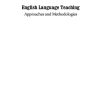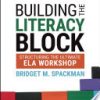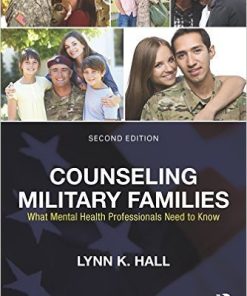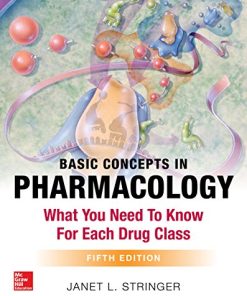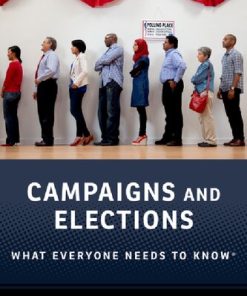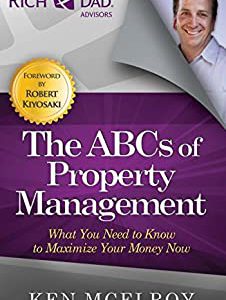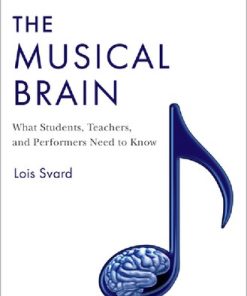(EBOOK PDF)Classroom Assessment What Teachers Need to Know 10th Edition by James Popham 9780138170868 013817086X full chapters
$50.00 Original price was: $50.00.$25.00Current price is: $25.00.
Classroom Assessment What Teachers Need to Know 10th Edition by James Popham – Ebook PDF Instant Download/Delivery: 9780138170868, 013817086X
Full download Classroom Assessment What Teachers Need to Know 10th Edition after payment
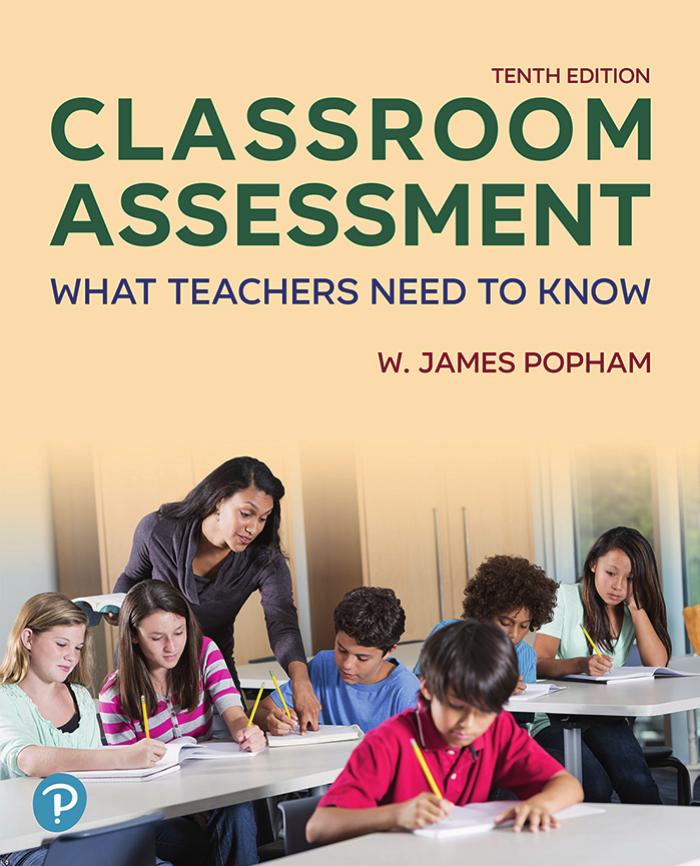
Product details:
• ISBN 10:013817086X
• ISBN 13:9780138170868
• Author:James Popham
Classroom Assessment
What Teachers Need to Know
Classroom Assessment shows pre- and in-service teachers how to use classroom testing accurately and formatively to dramatically increase your teaching effectiveness and promote student learning. In addition to clear and concise guidelines on how to develop and use quality classroom assessments, the author also focuses on the teaching implications of testing and the instructional payoffs of well-designed tests. Real-world case studies and examples of reliability, validity and fairness demonstrate how crucial test-appraisal criterion is used in a variety of instructional settings. Coverage of current guidelines, laws, policy changes, standards and methods keep you up to date on current best practices and requirements. The 10th Edition includes extensive discussion of the Standards for Educational and Psychological Testing and their impact on classroom assessment, new technology content, and more.
Classroom Assessment What Teachers Need to Know 10th Table of contents:
Chapter 1 Why Do Teachers Need to Know About Assessment?
Chief Chapter Outcome
Echoes of ESEA
School Reform Under Scrutiny
The Standards for Educational and Psychological Testing
Assessment Versus Testing
Why Should Teachers Know About Assessment? Yesteryear’s Answers
Determining Students’ Current Status
Monitoring Students’ Progress
Assigning Grades
Determining One’s Own Instructional Effectiveness
Why Should Teachers Know About Assessment? Today’s Answers
Influencing Public Perceptions of Educational Effectiveness
Helping Evaluate Teachers
Clarifying Teachers’ Instructional Intentions
What Do Classroom Teachers Really Need to Know About Assessment?
Creating Classroom Assessment Instruments
Interpreting Standardized Test Results
Instructionally Illuminating Assessment
Chapter Summary
References
A Testing Takeaway
Chapter 2 Deciding What to Assess
Chief Chapter Outcome
What to Assess
Decision-Driven Assessment
The Role of Curricular Aims
“Right-Sizing” Assessment Results
Cognitive, Affective, and Psychomotor Assessment
Standards-Based Classroom Assessment
Norm-Referenced Versus Criterion-Referenced Assessment
Selected Responses and Constructed Responses
A State’s Official Curricular Aims
“Many a Slip . . .”
Science: Not to Be Left Behind
What’s Assessed on Your State’s Accountability Test?
Awash in a Sea of Assessment Changes
Other Exams You Should Know a Bit About
Assessment Blueprints
Call on a Colleague
A Collection of What-to-Assess Considerations
Tests as Instructional Influencers
Dividends of Assessment Illumination
A Profusion of Item Types
What Do Classroom Teachers Really Need to Know About What to Assess?
A Three-Chapter Preview
Chapter Summary
References
A Testing Takeaway
Chapter 3 Reliability of Assessment
Chief Chapter Outcome
Test-Retest Reliability Evidence
Alternate-Form Reliability Evidence
Internal Consistency Reliability Evidence
Three Coins in the Reliability/Precision Fountain
The Standard Error of Measurement
What Do Classroom Teachers Really Need to Know About Reliability/ Precision?
Chapter Summary
References
Endnotes
A Testing Takeaway
Chapter 4 Validity
Chief Chapter Outcome
A Quest for Defensible Interpretations
Validity Evidence
Validity Evidence Based on Test Content
Developmental Care
External Reviews
Alignment
Validity Evidence Based on Response Processes
Validity Evidence Based on a Test’s Internal Structure
Validity Evidence Based on Relations to Other Variables
Test–Criterion Relationships
Convergent and Discriminant Evidence
Sanctioned and Unsanctioned Labels for Validity Evidence
The Relationship Between Reliability and Validity
A Potential Paradox
What Do Classroom Teachers Really Need to Know About Validity?
Chapter Summary
References
A Testing Takeaway
Chapter 5 Fairness
Chief Chapter Outcome
The Nature of Assessment Bias
Offensiveness
Unfair Penalization
Disparate Impact and Assessment Bias
Judgmental Approaches
Bias Review Panels
A Per-Item Absence-of-Bias Judgment
An Overall Absence-of-Bias Judgment
Empirical Approaches
Bias Detection in the Classroom
Assessing Students with Disabilities and English Language Learners
Children with Disabilities and Federal Law
English Language Learners
Is Fairness a Bona Fide Member of Educational Testing’s “Big Three”?
What Do Classroom Teachers Really Need to Know About Fairness?
Chapter Summary
References
Endnote
A Testing Takeaway
Chapter 6 Selected-Response Tests
Chief Chapter Outcome
Expanding Electronic Options
Ten (Divided by Two) Overall Item-Writing Precepts
Opaque Directions
Ambiguous Statements
Unintended Clues
Complex Syntax
Difficult Vocabulary
Binary-Choice Items
Phrasing Items to Elicit Thoughtfulness
Minimizing Negatives
Avoiding Double-Concept Items
Balancing Response Categories
Maintaining Item-Length Similarity
Multiple Binary-Choice Items
Separating Clusters
Coordinating Items with Their Stem
Multiple-Choice Items
Stem Stuffing
Knocking Negatively Stated Stems
Attending to Alternative Length
Assigning Correct Answer-Positions
Dealing with “Of-the-Above” Alternatives
Matching Items
Employing Homogeneous Entries
Going for Relative Brevity
Loading Up on Responses
Ordering Responses
Describing the Task for Students
Same-Page Formatting
What Do Classroom Teachers Really Need to Know About Selected-Response Tests?
Chapter Summary
References
A Testing Takeaway
Chapter 7 Constructed-Response Tests
Chief Chapter Outcome
Short-Answer Items
Using Direct Questions Rather Than Incomplete Statements
Nurturing Concise Responses
Positioning Blanks
Limiting Blanks
Inducing Linear Equality
Essay Items: Development
Creating Essay Items
Communicating the Extensiveness of Students’ Responses Sought
Describing Students’ Tasks
Providing Time-Limit and Item-Value Guidance
Avoiding Optionality
Previewing Students’ Responses
Essay Items: Scoring Students’ Responses
Choosing an Analytic and/or Holistic Scoring Approach
Devising a Tentative Scoring Key
Deciding Early About the Importance of Mechanics
Scoring One Item at a Time
Striving for Anonymity
What Do Classroom Teachers Really Need to Know About Constructed-Response Tests?
Chapter Summary
References
A Testing Takeaway
Chapter 8 Performance Assessment
Chief Chapter Outcome
What Is a Performance Test?
Identifying Suitable Tasks for Performance Assessment
Inferences and Tasks
The Generalizability Dilemma
Factors to Consider When Evaluating Performance-Test Tasks
Performance Tests and Teacher Time
The Role of Rubrics
Rubrics: The Wretched and the Rapturous
Task-Specific Rubrics
Hypergeneral Rubrics
Skill-Focused Rubrics
Ratings and Observations
Sources of Error in Scoring Student Performances
Scoring-Instrument Flaws
Procedural Flaws
Teachers’ Personal-Bias Errors
What Do Classroom Teachers Really Need to Know About Performance Assessment?
Chapter Summary
References
A Testing Takeaway
Chapter 9 Portfolio Assessment
Chief Chapter Outcome
Classroom Portfolio Assessment Versus Large-Scale Portfolio Assessment
Classroom Applications
Who Is Evaluating Whom?
Large-Scale Applications
Seven Key Ingredients in Classroom Portfolio Assessment
Purposeful Portfolios
Work-Sample Selection
Appraising Portfolios
The Pros and Cons of Portfolio Assessment
What Do Classroom Teachers Really Need to Know About Portfolio Assessment?
Chapter Summary
References
A Testing Takeaway
Chapter 10 Affective Assessment
Chief Chapter Outcome
Why Assess Affect?
The Importance of Affect
Spurring Affectively Focused Instruction
Monitoring Students’ Status
The Other Side of the Argument
Which Affective Variables Should Be Assessed?
A Closer Look at Affect
Potential Attitudinal Targets
Potential Interest Targets
Potential Value Targets
How Should Affect Be Assessed in Classrooms?
Self-Report Assessment
Likert Inventories
Multifocus Affective Inventories
Building a Multifocus Affective Inventory
The Importance of Genuine Anonymity
When to Assess Affect
What Kinds of Inferences Are at Stake in Affective Assessment?
Altering Students’ Affect: A Nontrivial Challenge
What Do Classroom Teachers Really Need to Know About Affective Assessment?
Chapter Summary
References
A Testing Takeaway
Chapter 11 Improving Teacher-Developed Assessments
Chief Chapter Outcome
Judgmentally Based Improvement Procedures
Judging Your Own Assessment Instruments
Collegial Judgments
Student Judgments
Empirically Based Improvement Procedures
Difficulty Indices
Item-Discrimination Indices
Distractor Analyses
Item Analysis for Criterion-Referenced Measurement
What Do Classroom Teachers Really Need to Know About Improving Their Assessments?
New-Age Assessment Items
Chapter Summary
References
A Testing Takeaway
Chapter 12 Formative Assessment
Chief Chapter Outcome
Assessment That Transforms Teaching
What Is Formative Assessment?
Is Formative Assessment the Same as “Assessment for Learning”?
What Formative Assessment Isn’t
Research Supporting Formative Assessment
The Black and Wiliam Research Review
Learning Progressions as Frameworks
What Is a Learning Progression?
Building a Learning Progression
Formative Assessment: A Means-Ends Game
A Formative Assessor’s Typical Decisions
Why the Delay?
A Misunderstood Process
Experienced Teachers’ Intransigence
Undetected Improvements
Actionability
What Do Classroom Teachers Really Need to Know About Formative Assessment?
Chapter Summary
References
A Testing Takeaway
Chapter 13 Making Sense Out of Standardized Test Scores
Chief Chapter Outcome
Standardized Tests
Group-Focused Test Interpretation
Individual Student Test Interpretation
Percentiles
Grade-Equivalent Scores
Scale Scores
Contrasting Common Interpretive Options
The Instructional Yield from Standardized Achievement Tests
Instructionally Diagnostic Tests
What Is an Instructionally Diagnostic Test?
How Good Is an Instructionally Diagnostic Test?
The SAT and the ACT: Three-Letter, High-Import Exams
The SAT
The ACT
Predictive Accuracy—And Its Implications
Of Belated Realizations
What Do Classroom Teachers Really Need to Know About Interpreting Standardized Test Scores?
Chapter Summary
References
A Testing Takeaway
Chapter 14 Appropriate and Inappropriate Test-Preparation Practices
Chief Chapter Outcome
High-Stakes Assessment Arrives
Atypical Times Require Atypical Responses
Assessment Results as Inference Illuminators
Two Evaluative Guidelines
Five Test-Preparation Practices
Applying the Two Guidelines
Maladies Spur Variety
What About “Teaching to the Test”?
What Do Classroom Teachers Really Need to Know About Test-Preparation Practices?
Chapter Summary
References
A Testing Takeaway
Chapter 15 The Evaluation of Instruction
Chief Chapter Outcome
A Focus on Consequences
Classroom-Assessment Evidence
Pretests Versus Posttests
The Split-and-Switch Design
What to Assess
Evidence from External Accountability Tests
Comparative Estimates of Progress: Student Growth Percentiles
Instructional Sensitivity
The Genesis of Instructional Insensitivity
Avoidance of Instructionally Insensitive Items
Determining Students’ Progress: With Value-Added Models
What’s a Teacher to Do?
Right Task, Wrong Tools
Evaluative Equivalence of Standardized Tests: Wariness Warranted
What Do Classroom Teachers Really Need to Know About Assessment-Based Evaluation of Teaching?
Chapter Summary
References
A Testing Takeaway
Chapter 16 Assessment-Based Grading
Chief Chapter Outcome
The Purpose of Grading
How Does Goal-Attainment Grading Take Place?
Grade-Giving Specifics
Evaluative Options
What About Effort?
What About Those Important Intangibles?
Digital Record Keeping
Student-Involved Grading Conferences
Grading’s Inherent Imprecision
What Do Classroom Teachers Really Need to Know About Assessment-Based Grading of Students?
Chapter Summary
References
A Testing Takeaway
Online Assessment
Glossary
Index
People also search for Classroom Assessment What Teachers Need to Know 10th:
classroom assessment: what teachers
classroom assessment what teachers need to know 9th edition
classroom assessment what teachers need to know pdf
borrow classroom assessment what teachers need to know
classroom assessment what teachers need to know popham
Tags:
Classroom Assessment,What Teachers Need,James Popham
You may also like…
Politics
Campaigns, Elections, and the Threat to Democracy: What Everyone Needs to Know® 2nd Edition
Uncategorized
eTextbook 978-0415704519 Counseling Military Families: What Mental Health Professionals Need to Know
Uncategorized
Politics & Philosophy - Government & Politics
Religion & Spirituality - Islam
Jihad What Everyone Needs to Know 1st edition by Asma Afsaruddin 0190647346 9780190647346
Uncategorized
Politics & Philosophy - Social Sciences
Politics & Philosophy - Government & Politics
The New Middle East: What Everyone Needs to Know(r) 2nd Edition


